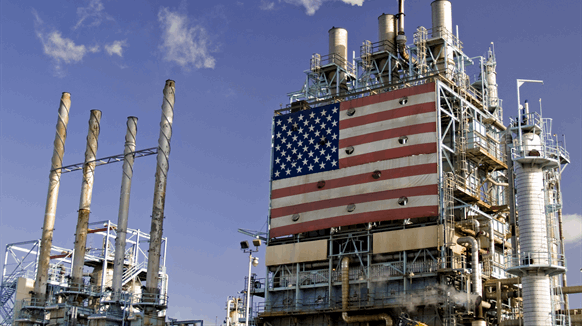
(Bloomberg) -- Summer is the time of the year when refiners are apt to chase profits regardless of what supply and demand numbers tell them.
Particularly this year, after more than 12 months of retreat and industry losses in the billions because of a pandemic that paralyzed economies, the need for urgency is plain. The July 4 holiday, traditionally a big driving time in the U.S., begins next weekend. Not far behind looms August when the Atlantic hurricane season traditionally kicks into high gear.
PBF Energy Inc.’s Delaware City refinery summoned an extra 500,000 barrels of feedstock for fuel-making production units that are running harder to get more gasoline to market, a person familiar with operations said. Shipping data compiled by Bloomberg show the vacuum gasoil, or VGO, arrived after nearly a four-week journey from Russia, indicating PBF had long planned to rev up summer rates.
Industry wide, gasoline production in the week ended June 18 jumped 4% to 10.3 million barrels a day, the highest level since September 2019. Gasoline stocks fell nearly 3 million barrels to 240 million as gasoline demand, measured by products supplied, rose 80,000 barrels to 9.44 million barrels a day, a five-week high. The overall demand for oil products rose 0.9% to 20.8 million barrels a day.
For the faint of heart, there are danger signals: The four-week rolling average demand for gasoline, a more reliable gauge, fell 10,000 barrels to 9.11 million. That’s 445,000 barrels below the five year average for 2014-2019. The four-week average demand for all oil products is seasonally the lowest since 2014, excluding 2020.
“Refiners are running but demand isn’t there yet,” said Amrita Sen, co-founder of London consultancy Energy Aspects and head of research.
The Nymex 3-2-1 crack spread, a rough gauge of the margin refiners can capture with a barrel of crude based on futures prices in New York, fell below $20 a barrel for the second consecutive day on Monday while Gulf Coast margins have also narrowed since Thursday.
If too much product comes to market too fast, spot prices will sag as happened with Chicago diesel earlier this week. Midwest rates at 96.6% are still the highest in the nation even after dropping 0.7% to 96.6% last week. Midwest supply rose a third week, by 980,000 barrels to 49.6 million barrels, the highest since April 16.
On the West Coast, which raised rates last week, summer heat waves threaten to overwhelm power grids, which could bring an abrupt stop to production at any time. Monthly and all-time high temperatures could envelop Washington, Oregon, Idaho and Montana.
For Gulf Coast refiners, another overactive hurricane season could be in store for the Atlantic, with government forecasters predicting as many as 20 named storms after a record number slammed into the U.S. mainland in 2020.
Refining margins (as of June 24, in $/bbl)
- Maya U.S. Gulf coking at $5.77
- LLS U.S. Gulf cracking at $7.88
- WCS U.S. Midcontinent coking at $27.56
- East Coast Forcados cracking at $3.57
Nymex crack spreads
- U.S. West Coast WCS crude oil 3-2-1 crack spread at $35.77
- 3-2-1 front-month crack spread at $19.33
- For more crack spread futures, see CRCK
--With assistance from Javier Blas and Brian K. Sullivan.
© 2021 Bloomberg L.P.




No comments:
Post a Comment